Tens of thousands fled to Armenia when war broke out in Nagorno-Karabakh in 2020. Not all of them were able to return because Azerbaijan was able to bring large areas of their homeland under its control. In Armenia, they are now trying to start a new life. But for many, the future seems uncertain here as well.
by Niels Bula
“The only thing I still want to see is that my children have a roof over their heads,” says Amalia Babayan. “That is the only thing I still want to hold on to and keep living for.” Amalia is 91 years old and lived in her own house in Berdzor until September. She had moved there from Yerevan with her family in the mid-1990s. Internationally, the town is better known by its Azerbaijani name, Lachin, which gave its name to the Lachin Corridor. Until September it was the link between Nagorno-Karabakh and Armenia, now it is controlled by Azerbaijan.
Amalia had to leave her house. Now she has only about 15 square meters, which she shares with one of her daughters and sometimes with her grandson when he visits. “I sleep there,” she says, pointing to a folding bed. During the day, it is folded up against the wall, covered with a tablecloth, and serves as a kind of shelf. They got the bed, a table, cupboards, an armchair and a small sofa from contacts in Yerevan.
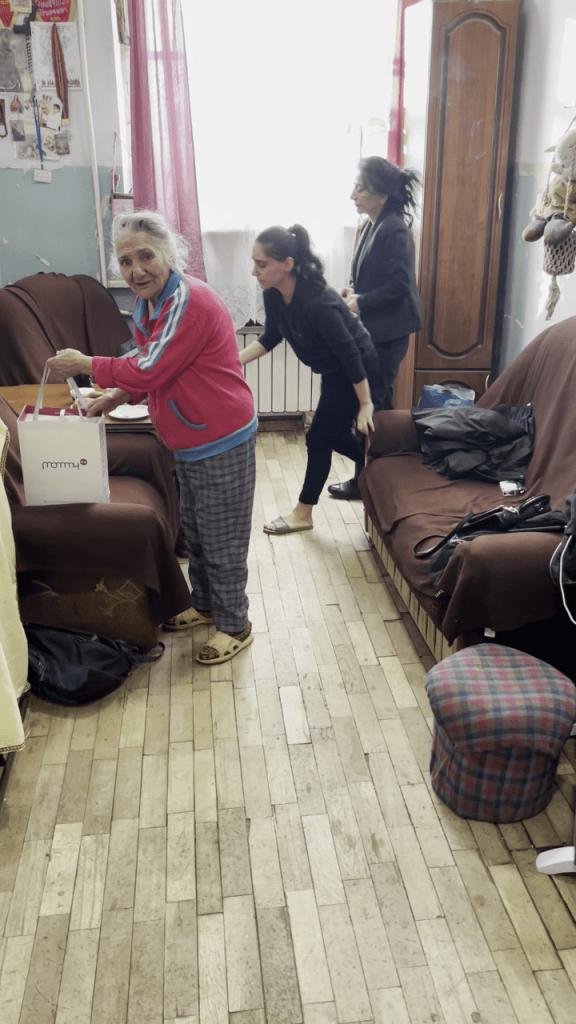
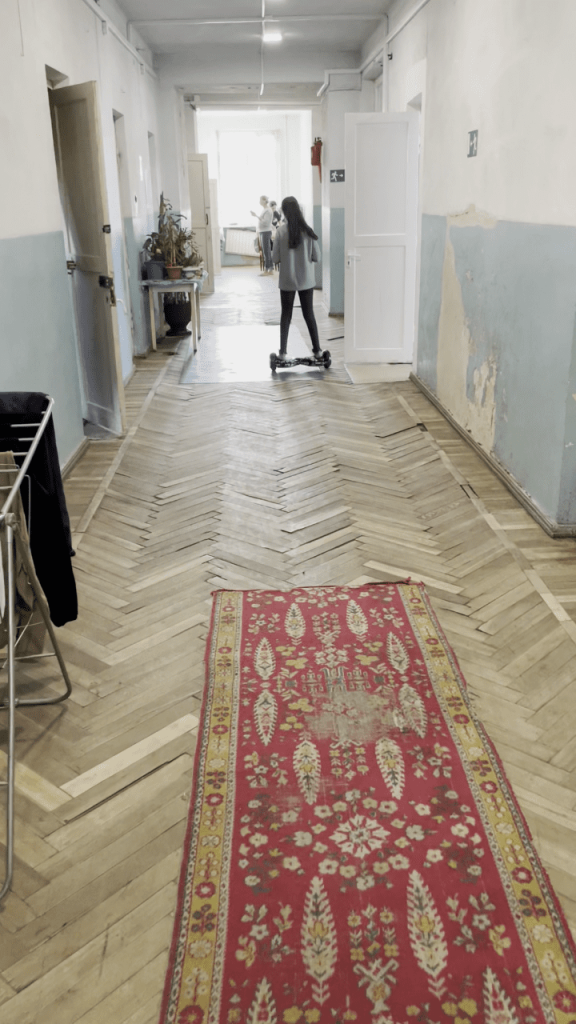
The state gave school rooms as temporary accommodation
Their room does not belong to a residential building. Together with 14 other refugees from Nagorno-Karabakh, Amalia lives in a corridor on the second floor of an old school, about 20 minutes by car from the center of Yerevan. They were provided with the rooms by the state as temporary accommodation. They can live here free of charge. Heating and water supply work. There is a shared bathroom in the corridor with several toilet cubicles and shower cells. In the beginning, everyone had to share one toilet, but later the municipality installed more, the residents say. Only the hot water is not always enough for everyone to wash, tells Amalia. Each of them can only take a few minutes to shower so that the others have hot water afterwards. Dishes are washed only with cold water.
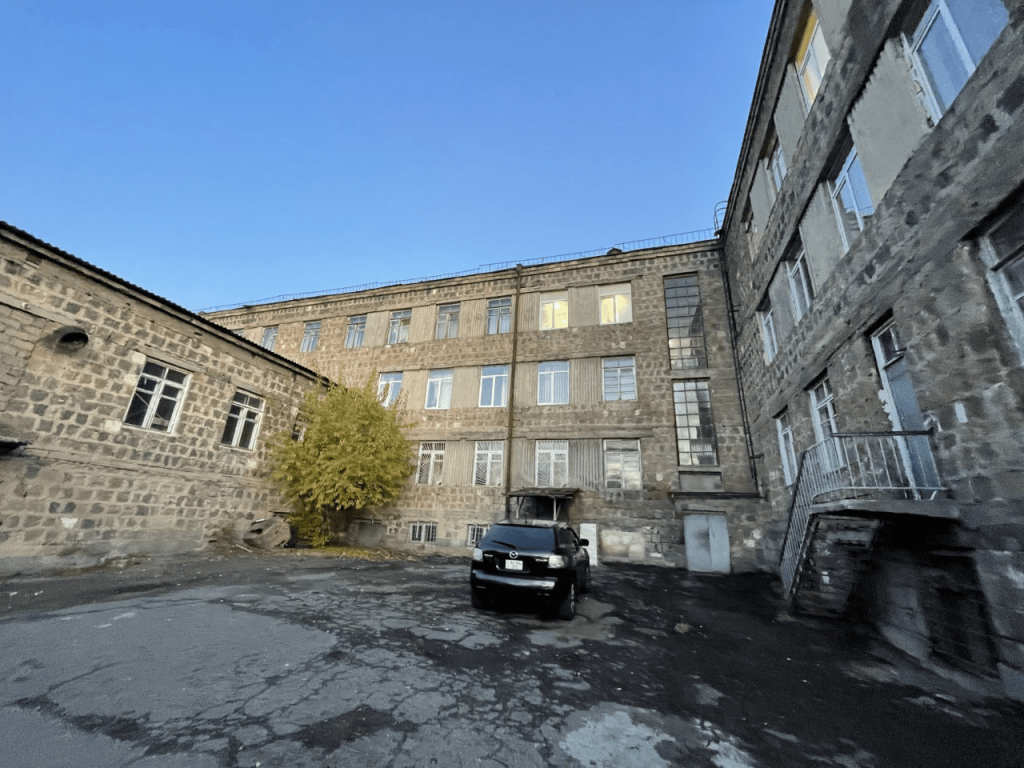
Residents cannot afford a flat
Even though they miss their old home, they are happy that they can at least use this accommodation free of charge, says Rubina Ovakimyan. The 67-year-old is one of Amalia’s daughters. She receives the equivalent of more than 140 US dollars a month from the state. With that, she cannot afford a flat in Yerevan. She has been living alone since her husband died several years ago. “His gravestone and a handful of soil from his grave are the only things I was able to take from Berdzor,” she says. “There was no time for anything else.”
While other Armenian families have children and grandchildren who can help out and bring relatives through on their wages, Rubina and her siblings cannot rely on that. Her sons are severely traumatized after the 2020 war against Azerbaijan. “The men have gone crazy with the war. One sound, and they jump up already.” Her nephew, she tells me, shakes in the night, and sees dead bodies everywhere in his mind’s eye.
Problem of status
As early as in 2020, many fled from Nagorno-Karabakh and the Lachin Corridor to Armenia during the war. According to the International Red Cross, about 90,000 people came at that time. Some went back home after the 44-day war, others stayed. According to information from the United Nations High Commissioner for Refugees (UNHCR), more than 26,700 people from the region were still in Armenia by the end of 2021.
One of their biggest problems is that they do not fit into one of UNHCR’s categories of refugees, says Tatevik Karapetyan, an expert on social services and social protection issues at the Armenian Association of Social Workers. “Neither the term ‘refugees’ nor the term ‘internally displaced persons’ can we use,” she says. The reason for this is the special status of the Nagorno-Karabakh region. In 1991, it declared itself independent. This independence is not recognized by the international community. Under international law, the region belongs to Azerbaijan. At the same time, however, the inhabitants of Nagorno-Karabakh have Armenian passports. “So we cannot call them refugees because they have Armenian Republic passports,” says Tatevik Karapetyan. “And they are not internally displaced persons either because they do not come from an Armenian territory.” There is only one term that fits: ‘people in a refugee-like situation’. This would make it more difficult for them to access international aid.
Hundreds of people demand stronger state support
Time and again, the refugees themselves call for help and support. Most of the time, it is about their concrete living conditions, such as the question of housing. On a recent Thursday afternoon in November 2022, several hundred people gathered in front of the Armenian government headquarters in Yerevan to protest for more support from the state. They all fled the region around the Lachin Corridor.
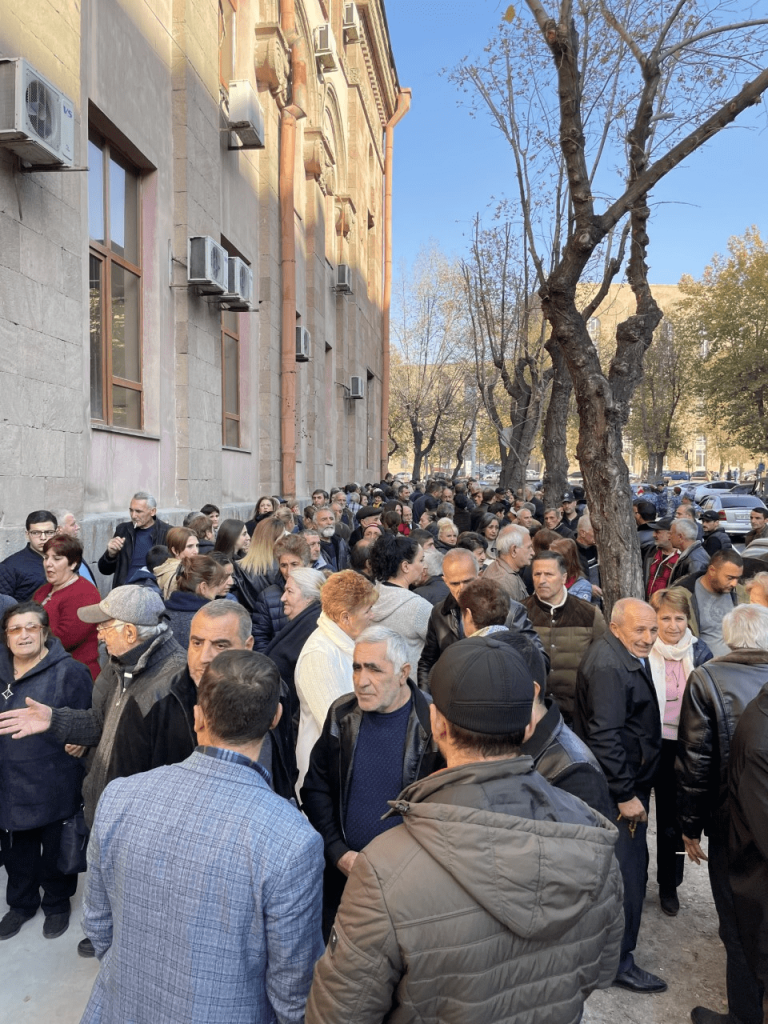
The demonstration was organized by Karineh Movsesyan. She worked as a Russian teacher and school director in Berdzor until the war and also ran a bakery with her husband and relatives. Because of the war, she had to leave all that behind. Now she lives with her husband in a one-room flat in Yerevan. At the moment, they both still receive their wages, although they no longer live in Berdzor. But soon the administration in Nagorno-Karabakh could stop paying them. “Then we could end up on the street, literally,” she says.
Flat prices go through the roof
She is far from satisfied with the Armenian state’s aid programs. Refugees from certain areas of Nagorno-Karabakh receive state support when they buy flats or houses in Armenia. Those who apply for a loan from a bank for this purpose are reimbursed part of the sum. For a property in Yerevan, the state gives the equivalent of more than 20,000 US dollars, in the other Armenian regions more than 25,000. But these sums are unrealistic for Karineh Movsesyan. “The prices here now are out of this world. Again and again, people have to move out of their homes because they can no longer pay the rent.”
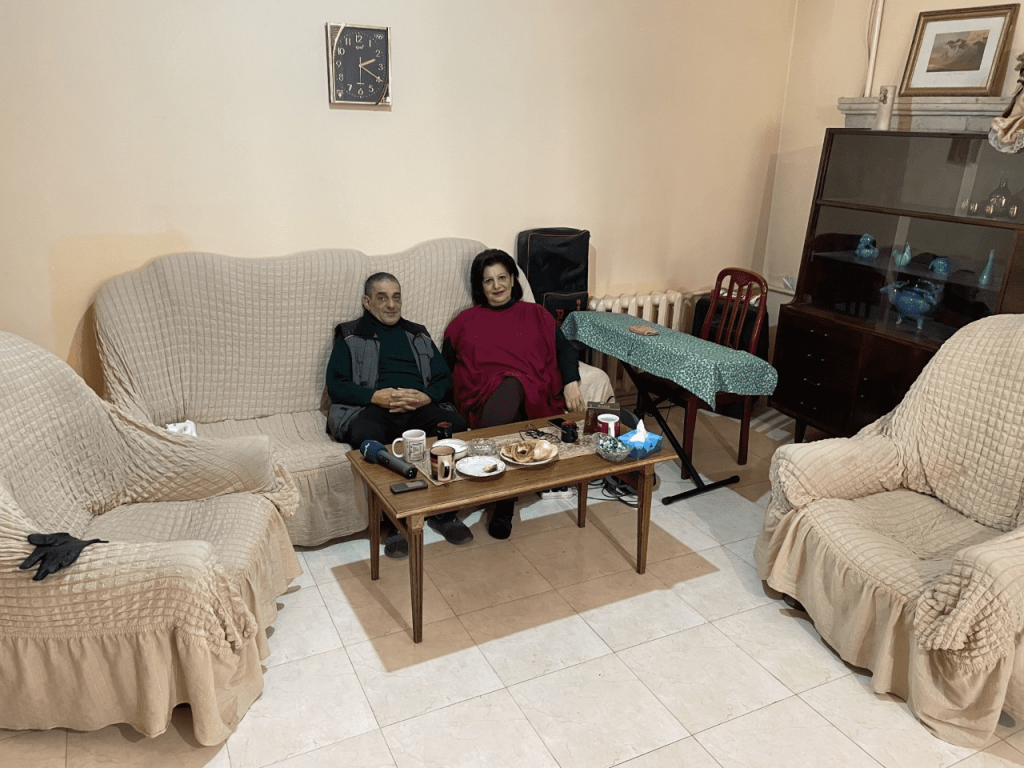
In fact, rents and prices for real estate have risen drastically in recent months. One reason is the people from Russia who have been coming in large numbers to Armenia since the start of the war in Ukraine for political and also economic reasons caused by the Western sanctions. They can often pay more than Armenians. This has consequences: according to the Armenian Statistical Committee, in July 2021 the price per square meter of a flat in the center of Yerevan was still 1580 dollars. One year later, it was already 1880 dollars. In the meantime, prices have probably risen even more because more Russians came to Armenia in September after the Russian partial mobilization was announced.
“We just want to live normally“
According to Karineh Movsesyan, this price development should also be reflected in state support. “We just want to live normally. Not in palaces, but in normal houses.” Like most people in the Lachin Corridor, Karineh and her husband had moved there from Armenia in the 1990s. The Armenian state and the administration in Nagorno-Karabakh had recruited them specifically to repopulate the area. The Azerbaijanis who had lived there before had been displaced by the war.
“We arrived then in a completely destroyed country and turned it into a flourishing garden,” says Karineh. Initially, there was no running water, no functioning electricity supply, and no houses. Not all the promised aid from the Armenian government and the administration of Nagorno-Karabakh had actually been implemented. And so they had to build most of it with their own hands. Now they would have to start all over again, and therefore claim more help from the state.
Little hope in state’s help
“We want a meeting with Prime Minister Pashinyan, or at least with the mayor of Yerevan,” she says on the sidelines of the demonstration. A little later, the doors of the government building open. Karineh and a few other representatives can talk to the Minister of Social Affairs. But she has already spoken to him several times. Even after this meeting, there have been no concrete results.
Amalia Babayan is also taking part in the demonstration. Meanwhile, she has little hope that the state will help. When she talks about it, the 91-year-old gets angry. “The state is spitting on us. It’s been going on for two years now. We come here and talk and talk. Nothing happens.”
This article was published within the frames of “Correspondents in Conflict” Project,
implemented by Yerevan Press Club and Deutsche Gesellschaft e. V. The Project is
funded by the German Federal Foreign Office within the “Eastern Partnership Program”.
The contents of this article are the sole responsibility of the implementing partners and can in
no way be taken to reflect the views of the Federal Foreign Office. #civilsocietycooperation
 Niels Bula is based in Leipzig and works as radio and TV reporter for the public network MDR. After several stays in Russia, post-Soviet politics and societies are part of his interest. Furthermore he covers local topics in East Germany.
Niels Bula is based in Leipzig and works as radio and TV reporter for the public network MDR. After several stays in Russia, post-Soviet politics and societies are part of his interest. Furthermore he covers local topics in East Germany.












